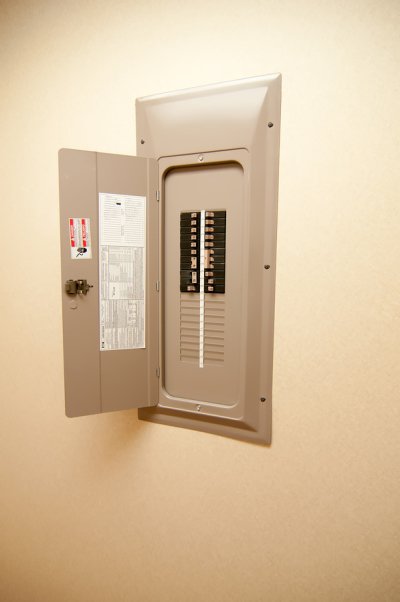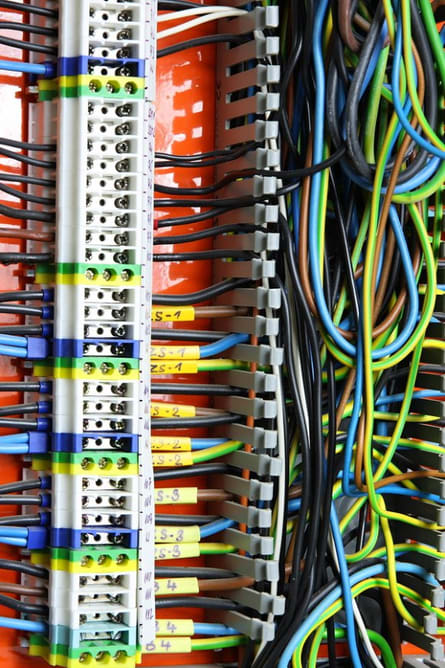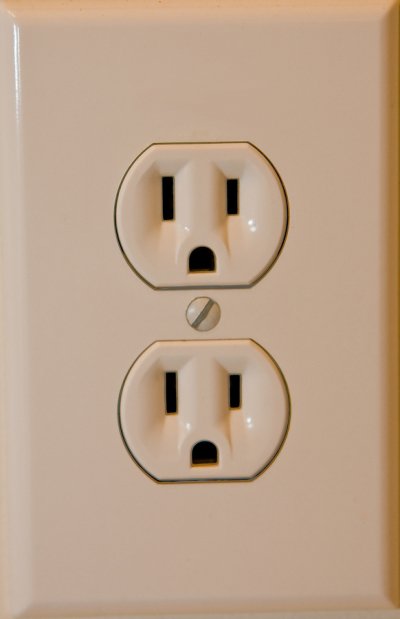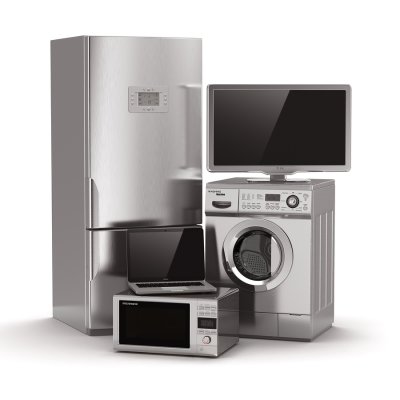-
Keeping Children Safe Around Your Electric Supply
If you are a parent, it is highly important to teach your children about the fundamentals of electrical safety. By stressing the importance of electrical safety at home, you can help reduce the chances of accidental harm or injury. Some major electrical components, such as the circuit breaker or electrical wiring, can cause significant harm if they are not treated with the utmost caution. To enhance the safety of your home electrical system, you may schedule a safety inspection with electricians serving San Jose . A professional electrician can help you make sure that your home electricity is safe for your children. Here are some top tips for keeping your children safe around your electric supply.

Avoid Overloading Your Outlets
One of the best ways to keep your children safe around your electrical supply is to avoid overloading your electrical outlets. When you plug appliances into your electrical outlets, be sure that you only plug a few items into each socket or extension cord. In addition, you may want to teach your children to stay away from electrical outlets when they do not have parental supervision.Install Tamper-Resistant Receptacles
Another way to ensure that you children are safe around your electrical outlets is to install tamper-resistant receptacles. These innovative devices will ensure that all of your sockets are completely child-proof. The electricians at a highly rated electrical repair company can help you evaluate where tamper-resistant receptacles should be installed in your home.Make Sure That You Have Ground Fault Circuit Interrupters
To enhance the safety of your electrical appliances, you may want to ensure that you have ground fault circuit interrupters installed in key areas throughout your home. These devices will prevent the chances of a family member being shocked in the event of an unexpected ground fault. Your electrician will be able to answer all of your questions about electrical safety at home. -
Safety Tips Around Electricity
Electricity is an important part of every modern home. To stay safe in your home, it is important to be aware of some essential safety tips around electricity. If you need to replace a lamp or fuse, it is highly important to turn off your circuit breaker. Circuit breakers control the flow of electricity to outlets and appliances throughout your home. By cutting off the electrical supply to your circuit breaker, you can help prevent an unintentional shock. With the services of an electrician serving San Jose, you can ensure that your home’s electrical system is safe and properly configured. To take a closer look at the basics of electrical safety, watch this video from eHow.
-
Questions You Should Be Able to Answer About Your Electrical System
Your home’s electrical system is one of its most important features. From your circuit breaker to your electric panels, the electrical system in your home is composed of a variety of sophisticated features. By educating yours el about the electrical supply to your home, you will be able to prevent an electrical emergency. An electrician serving San Jose can help you take expert care of your home’s electrical system. With the services of a qualified electrician, you can be sure that you will not be left without power. To help you test your knowledge of your home, here are some questions that you should be able to answer about your electrical system.

What Is the Difference Between a Fuse and a Circuit Breaker?
Fuses and circuit breakers both serve important functions in your electrical system . You will find these components inside your home’s electrical panel. Older homes may be equipped with fuses. If your home was built after the 1960s, chances are that your electrical system contains circuit breakers.Where Is Your Main Panel Located?
Your main panel is located at the power source for your building. If you open your main panel, you will find all of the circuit breakers that control your electrical supply. When your electrical system becomes overloaded, you may need to open your main panel and flip a circuit breaker switch. A licensed electrician can help you locate the electrical panel in your home.Are Your Outlets Grounded?
Grounded outlets are an important safety feature in a building. When an outlet is grounded, it is less likely to cause shock or electrocution. To determine whether your outlets are grounded, you can look at the prong holes in each socket. A grounded outlet will contain three holes, whereas an ungrounded outlet will have only two. If your home contains ungrounded outlets, you may want to schedule an upgrade with your electrician. -
Leave a Review On Our Google+ Page
Meeting your electrical needs is our top priority. We would love to hear your feedback on our Google+ page!

-
Electrical Panel Upgrades: What Is a Federal Pacific Warning?
A faulty or malfunctioning electric panel can pose a serious threat to your home. If your home was built between the 1950s and the 1980s, chances are that your electrical supply is connected to a Federal Pacific electric panel. These electric panels are highly dangerous, and should be replaced with brand new breaker boxes. Over the years, it has been shown that Federal Pacific electric panels do not meet the safety standards that were set by the UL. These faulty boxes can overheat, causing a building fire. If your home contains a Federal Pacific electric panel, do not hesitate to contact an electrician serving San Jose. The highly experienced electricians at a San Jose electrical company can evaluate the safety of your current electrical system. By trusting your new electrical panel upgrade to the professionals, you can rest easy knowing that your home is safe from the risk of an electrical fire.

-
Placing Outlets on a 20 Amp Electrical Circuit
Your circuit breakers are designed to ensure the safety of yourself and your family. When your home experiences a power surge, your circuit breaker will automatically shut off power to a certain area of your home. When you are building or remodeling your home , you may need to place new outlets on your electric panel. By hiring an electrician serving San Jose, you can ensure that your electrical wiring is performed safely and in accordance to electrical code. To provide you with an inside look at some of the important services offered by an electrician, here is an overview of the process of placing outlets on a 20 amp electrical circuit.

Determining Breaker Load
The first step of placing outlets on a 20 amp electrical circuit is to determine the allowable breaker load. The breaker load stands for the total amount of electricity that the circuit can handle before it becomes overloaded. As a general rule, a breaker can handle up to eighty percent of its rating. This means that the total load on a 20 amp circuit should be no more than 16 amps.Balancing the Load
Once the total allowable load has been determined, the next step is to decide which appliances and lights should be plugged into the circuit. To ensure the safety and performance of the circuit, it is a good idea to strike a balance between lights and outlets. This will ensure that the circuit does not become overloaded.Assigning Each Receptacle
Another way to prevent an overloaded circuit is to make sure that each receptacle is properly balanced. On a 20 amp circuit, this means that each receptacle should draw no more than 1.5 amps. These receptacles can be connected to fixtures and appliances using 12-guage wire. With the services of an electrician, you can ensure that your 20 amp circuit is properly set up. -
Steps Involved in Rewiring an Old House
There are many indicators that can signal it is time to rewire your home. Some of the most common signs of bad electrical wiring include inadequate power to switches or outlets, aluminum or cloth insulated wiring, ungrounded wiring, and an unsafe electrical panel. Rewiring your home can also provide additional outlets and protect your valuable electronics. Here is a look at the process of rewiring a house, including tips for choosing an electrician in San Jose .
Create an “Electrical Inventory”
The first step of rewiring your home is to create a list of all the electrical devices and appliances you’ll be using in the house, and where. Figuring out where and how you’ll be using power makes it easier for your electrician to install an adequate electrical system.
Research Local Building Codes
Building codes set electrical standards for everything from what kind of wiring is permitted to how many outlets you are allowed to put in each room. Designing and installing an electrical system that is not up to code can result in fines or having to pull out finished work.Identify Existing Infrastructure
To help your electrician perform the rewiring job as smoothly as possible, identify and mark existing electrical and plumbing infrastructure in your home. If you do not have the blueprints for your home, hire a contractor to mark pipes and existing wiring before your electrician arrives.Hire an Electrician
When you are ready to hire an electrician in San Jose, look for a licensed professional who has experience rewiring older homes in the Bay Area. Rewiring is a complex, demanding, and difficult process, so make sure the electrical company you hire is licensed, insured, and experienced. And if you aren’t sure whether your home needs to be rewired, schedule an electrical inspection to determine the best course of action. -
Do You Need a Dedicated Circuit for an Electric Cook Top?
 Dedicated circuits are designed to supply electricity to appliances with power demands higher than average appliances and electronics. If you are installing an electric cook top, for example, you may need to hire an electrician in San Jose to install a dedicated circuit. According to the National Electric Code, an electric cook top needs its own dedicated cir cuit only when there are no other built-in cooking appliances installed. An electric cook top does not need its own circuit if it is connected to the same circuit as a built-in oven.
Dedicated circuits are designed to supply electricity to appliances with power demands higher than average appliances and electronics. If you are installing an electric cook top, for example, you may need to hire an electrician in San Jose to install a dedicated circuit. According to the National Electric Code, an electric cook top needs its own dedicated cir cuit only when there are no other built-in cooking appliances installed. An electric cook top does not need its own circuit if it is connected to the same circuit as a built-in oven. The best way to protect your appliances and stay up to code is to schedule an in-home inspection with a San Jose electrician . Your electrician will inspect your electrical supply and recommend whether a dedicated circuit is needed for your electric cook top.
-
Here’s Why Delta Electric Is The Best Choice in San Jose
There is nothing more important than our customers! Check out our latest reviews on Google+ to read about why they love Delta Electric, and leave a review about your experience!
“I am 100% satisfied with their work and will be recommending Delta Electric to all my friends and family!” – Marcia F.
-
Which Appliances Need Individual Circuit Breakers?
An electrical circuit is simply a path through which your home’s electrical supply flows. Your electrical panel contains several circuits, each one containing a circuit breaker that stops the flow of electricity if there is a dangerous power spike or if an appliance or outlet tries to draw too much current. While appliances with higher power demands than average appliances and electronics should have their own dedicated circuit and breaker, there are other instances in which appliances with lower power ratings should also be put on a separate circuit. Here is a look at some of appliances and electronics that require individual circuit breakers, and how to have dedicated circuits installed using a residential electrician .

Power-Hungry Appliances
Most of the appliances that require their own circuit and circuit breaker are those that draw more power than average appliances and electrical devices. Common examples of power-hungry appliances include electrical ranges, wall ovens, refrigerators, heating and air conditioning units, furnaces, water heaters, washing machines, and dryers. Ask your San Jose electrician for a complete list of appliances that require dedicated circuits per the National Electric Code.Expensive Appliances and/or Electronics
When several appliances and electrical devices are on the same circuit, they all share the same electrical supply. While this is not a problem for small electricity users such as lamps and fans, expensive appliances and/or electronics might be more sensitive to power fluctuations that can occur on a shared circuit. To protect your computers, flat screen televisions, and other expensive electrical devices, have them put on a dedicated circuit.Must-Work Appliances and/or Devices
There are some appliances and electrical devices that need to work in order to protect your home and keep your family safe. Sump pumps, for example, should be put on a dedicated circuit to ensure that they don’t stop working because of a blown fuse as the result of a power surge. It is also a good idea to put your garage door opener on a dedicated circuit, seeing as your garage door weighs hundreds of pounds and a fault in the electrical supply to the opener can send all of that weight crashing down.
RECENT POSTS
categories
- Uncategorized
- Delta Electric
- Commercial Electrical
- Residential Electrical
- Electric Circuits
- Dedicated Circuits
- Circuit Breakers
- Electrical Panels
- Electrical Wiring
- Safety Inspections
- copper wires
- Electrician San Jose
- Trained Electricians
- Electrical Services San Jose
- Malfunctioning Electrical Outlets
- Circuit Breaker
- Grounding
- safety
- Flickering Lights
- Arc Fault Breakers
- electrical system
- Aluminum Wiring
- Circuit Interrupters
- House Surge Protection
- Zinsco Panel Warnings
- Wiring Conversion
- GFCI outlet
- professional electrician
- Knob-and-Tube Wiring
- modern home electrical system
- Fuses
Archives
2024
2023
2018
2017
- December (4)
- November (4)
- October (5)
- September (4)
- August (4)
- July (4)
- June (4)
- May (4)
- April (4)
- March (3)
- February (4)
- January (3)
2016
- December (3)
- November (4)
- October (4)
- September (4)
- August (4)
- July (4)
- June (4)
- May (4)
- April (4)
- March (4)
- February (4)
- January (4)
2015
- December (4)
- November (4)
- October (4)
- September (4)
- August (3)
- July (4)
- June (4)
- May (3)
- April (4)
- March (4)
- February (2)
2014
- December (3)
- November (4)
- October (4)
- September (6)
- August (2)
- July (3)
- May (2)
- April (1)
- March (2)
- February (1)
- January (1)
